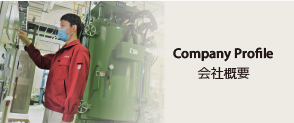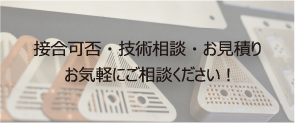- Home
- Frequently asked questions(よくある質問)
Frequently asked questions(よくある質問)
Frequently asked questions
Q1: Does the material melt during diffusion bonding?
No, it does not melt.
Basically, the bonding action occurs below the melting point of the material, so there is no need to worry about melting.
Q2. What kind of materials do you process?
At Yamatech, we mainly use stainless steel SUS304, SUS430, but we have also joined other SUS grades, nickel, nickel alloys, copper, aluminum alloys, titanium, etc. in the past.
Q3. When did diffusion bonding start being used?
It is believed that it was first used industrially in the 1960’s.
Q4. I would like to join the ends of thin wires together to form one long wire by diffusion bonding. Is this possible? Also, is it possible to join single points together?
Diffusion bonding requires the joint’s surfaces to be in close contact with each other, so it is most compatible with surface-to-surface bonding. Generally, only surfaces that can be in close contact with each other without deforming due to pressure can be joined.
Q5. What kinds of diffusion bonding are available?
There are two main types of diffusion bonding.
One is a method of joining with only the base material.
The other is to use a metal insert.
The first is a method of joining achieved by applying pressure at a temperature below the melting point of the base metal without any kind of additional material. This method is Yamatech’s forte.
Q6. Can aluminum be joined by diffusion bonding?
Aluminum produces a very strong oxide film.
The melting point of aluminum itself is 660℃, but the melting point of aluminum oxide exceeds 2000 ℃. It is difficult to join because this oxide-film cannot be disrupted as part of the bonding process.
However, because of Yamatech’s years of data collection and expertise, we can offer stable diffusion bonding of aluminum grades 6061, 6063, 7075, etc.
Q7. Is there any warpage or deformation of the parts after joining?
No, unlike laser welding or brazing, diffusion bonding is suitable for joining micron-sized machined parts because neither the parts nor the joints are deformed. However, there are cases where warpage can occur depending on the combination of materials. Please contact us about this for more information.



